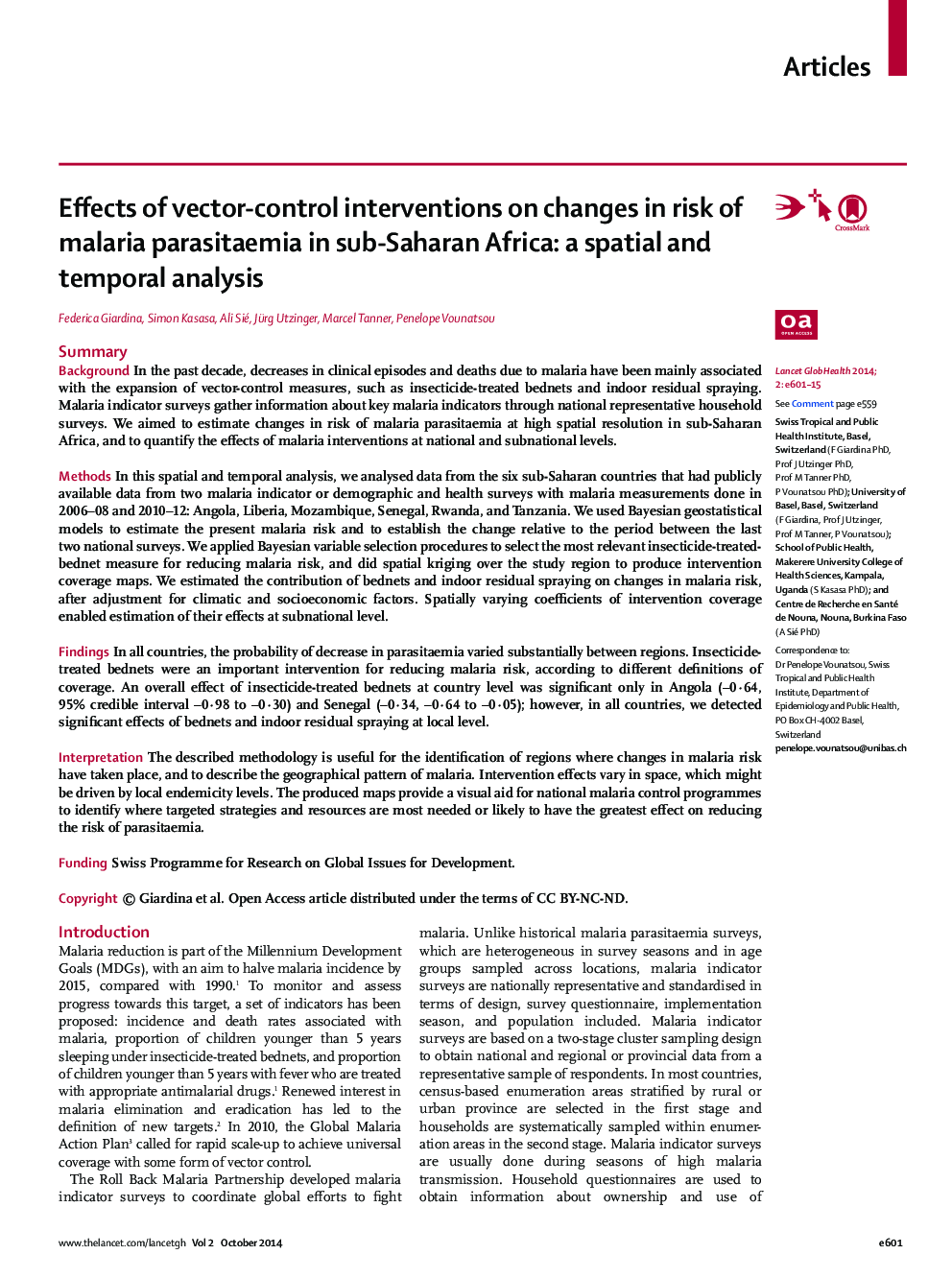| Article ID | Journal | Published Year | Pages | File Type |
|---|---|---|---|---|
| 3409339 | The Lancet Global Health | 2014 | 15 Pages |
SummaryBackgroundIn the past decade, decreases in clinical episodes and deaths due to malaria have been mainly associated with the expansion of vector-control measures, such as insecticide-treated bednets and indoor residual spraying. Malaria indicator surveys gather information about key malaria indicators through national representative household surveys. We aimed to estimate changes in risk of malaria parasitaemia at high spatial resolution in sub-Saharan Africa, and to quantify the effects of malaria interventions at national and subnational levels.MethodsIn this spatial and temporal analysis, we analysed data from the six sub-Saharan countries that had publicly available data from two malaria indicator or demographic and health surveys with malaria measurements done in 2006–08 and 2010–12: Angola, Liberia, Mozambique, Senegal, Rwanda, and Tanzania. We used Bayesian geostatistical models to estimate the present malaria risk and to establish the change relative to the period between the last two national surveys. We applied Bayesian variable selection procedures to select the most relevant insecticide-treated-bednet measure for reducing malaria risk, and did spatial kriging over the study region to produce intervention coverage maps. We estimated the contribution of bednets and indoor residual spraying on changes in malaria risk, after adjustment for climatic and socioeconomic factors. Spatially varying coefficients of intervention coverage enabled estimation of their effects at subnational level.FindingsIn all countries, the probability of decrease in parasitaemia varied substantially between regions. Insecticide-treated bednets were an important intervention for reducing malaria risk, according to different definitions of coverage. An overall effect of insecticide-treated bednets at country level was significant only in Angola (–0·64, 95% credible interval −0·98 to −0·30) and Senegal (–0·34, −0·64 to −0·05); however, in all countries, we detected significant effects of bednets and indoor residual spraying at local level.InterpretationThe described methodology is useful for the identification of regions where changes in malaria risk have taken place, and to describe the geographical pattern of malaria. Intervention effects vary in space, which might be driven by local endemicity levels. The produced maps provide a visual aid for national malaria control programmes to identify where targeted strategies and resources are most needed or likely to have the greatest effect on reducing the risk of parasitaemia.FundingSwiss Programme for Research on Global Issues for Development.
